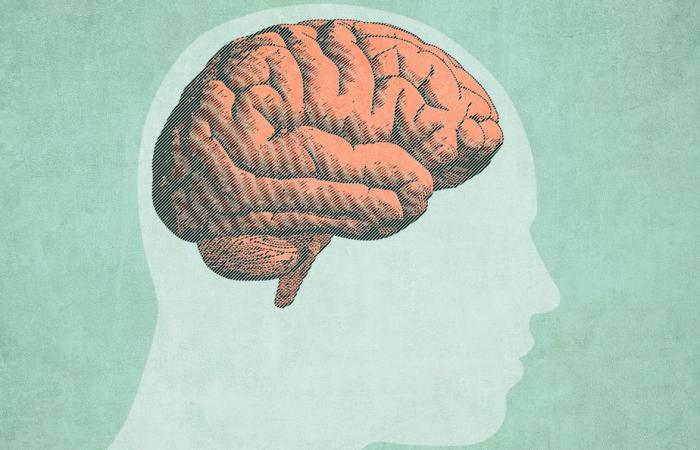The ninth Pain Talks day will take place on Thursday at Gesù in Montreal, during which young researchers will present the future of the fight against chronic pain. On the program: microbiota, magnetic neurostimulation, migraine, piano and placebo effect.
Posted at 1:28 a.m.
Updated at 5:00 a.m.
Magnetic neurostimulation
The brains of patients with chronic low back pain (lower back pain) display an important difference compared to healthy people: the region of the brain that controls the muscles in this region of the body is smaller.
“We think that there are altered neuronal circuits, which could be rehabilitated with magnetic neurostimulation,” indicates Amira Cherif, postdoctoral researcher at Laval University. “That would be in combination with targeted exercises. »
Neurostimulation with a weak electric current, potentially feasible at home, could also work, but it is too early to know, according to Mme Cherif.
These two technologies are also used to treat depression.
Microbiota
Maayan Ben Sasson is convinced: we will be able to diagnose different types of pain and determine treatments by analyzing the intestinal microbiota of patients, that is to say the bacterial composition of their intestines.
“The intestine produces amino acids, proteins and bile acids which play a role in pain,” explains the physician-researcher at the McGill University Health Center. A small study showed pain biosignatures in the microbiota. We are in the process of doing a larger one with 100 patients. »
This research is part of an increasingly active field in medicine: the “belly-brain axis” (gut brain axis). In the theory that the gut and the brain are linked, we find inflammation and bacteria: certain bacteria cause inflammation, which is transmitted to the brain.
Take part in the study on chronic pain and the microbiota
Distraction
“Don’t think about it! » How many times have parents repeated this phrase to their child who is complaining of pain that is not very worrying.
For Zoha Deldar, this is a very real approach. “When we are distracted from pain, we suffer less. But you have to have a pleasant distraction. Otherwise, it becomes boring, and we think back to the pain. »
The McGill University neuroscientist compared the response to pain (50°C heat in the calf) of “experienced beginners” and “beginners” pianists. The former had 50% less pain, probably because they had more fun playing.
She now wants to understand what happens in the brain when pain is reduced by a pleasant activity, using magnetic resonance imaging.
Mental fog
When she was beginning her studies in rehabilitation, Ronessa Dass was struck by the frequency of mentions of “brain fog” among patients with chronic pain.
Now a researcher at McMaster University, Mme Dass works to reduce this mental fog, which can make it difficult to adhere to treatments. “Pain occupies part of cognitive resources. We have less for the rest. Pain also creates mental health problems like depression, which is associated with brain fog. »
What to do? “It’s different for each patient,” replies M.me Dass. There may be pain diaries, memory aids. We can also do an assessment of the living environment to limit mental fog. »
Pelvic pain
When Malgorzata Starzec-Proserpio completed her master’s degree in physiotherapy in Norway, she was surprised to see the scope of services available to alleviate pelvic pain. “In Poland, where I come from, it was really less developed. »
The postdoctoral researcher from the University of Sherbrooke continued along this path. She is now working on updating clinical guidelines for pelvic pain.
“Currently, we mainly offer pharmaceutical solutions, injections, surgeries. For other types of pain, we resort to physiotherapy, less invasive treatments. We realized that physiotherapy also works very well for pelvic pain. »
The next advance is the use of electrotherapy to relieve pelvic pain, which seems very promising, according to the Sherbrooke researcher.
Placebo effect
The placebo effect is the improvement in the condition of a patient who follows, without their knowledge, a treatment (administration of tablets, liquids, injections and any other procedure) whose effectiveness is low or nil, but which increases that it is effective.
When we talk about pain, this placebo effect involves the emission of opioid molecules in the brain. At the University of Montreal, researcher Dylan Sutterlin-Guindon wants to understand these emissions of painkiller molecules.
“The idea would be to reproduce the placebo effect in the brain, with drugs that interact with the brain circuits involved in the emission of opioid molecules. »
This effect is powerful and responsible for the pain-relieving benefits of physical exercise and meditation, among others, notes Mr. Sutterlin-Guindon.
Unnecessary tests
Doctors are used to carrying out tests to fully understand the nature of an illness and to determine the ideal treatment. But for chronic pain, tests can be harmful, warns René Wittmer, a family doctor from Quebec specializing in pain.
“There are too many tests with chronic pain,” says Dr.r Wittmer. But often, we will not have treatment. It is better to take into account the psycho-sociological and social impacts of pain when supporting the patient. »
For example, a study showed that, in patients who had back pain for four weeks, if a medical imaging test was done, the patient saw their pain worsen compared to those who had not had any tests. “A test is a source of anxiety,” summarizes the Dr Wittmer. The patient has the impression that we are looking for something serious. »
Migraine testimony
Maryse Loranger’s migraines began in childhood, with symptoms such as stomach aches. Then, they became throbbing headaches in adulthood. Until Maryse Loranger simply could no longer continue her activity as a dancer, choreographer and dance teacher, at the start of her forties, 15 years ago.
“I managed to regain control of my life, with very significant changes,” says Mme Loranger, who wants to tell his experience to inspire hope among migraine victims.
She notably moved from a central neighborhood of Montreal to Deux-Montagnes, devoted herself to art (she paints), singing, the outdoors, writing and training in “somatic movement”, and interrupted maintains her activities when she feels the migraine coming on. “Sometimes I can get out of it in a few hours, whereas 15 years ago I only had a few hours a day without a migraine. »
If her migraine had been treated this way from the start, it wouldn’t have gotten so bad, Ms.me Loranger.
Consult the Pain Talks program






